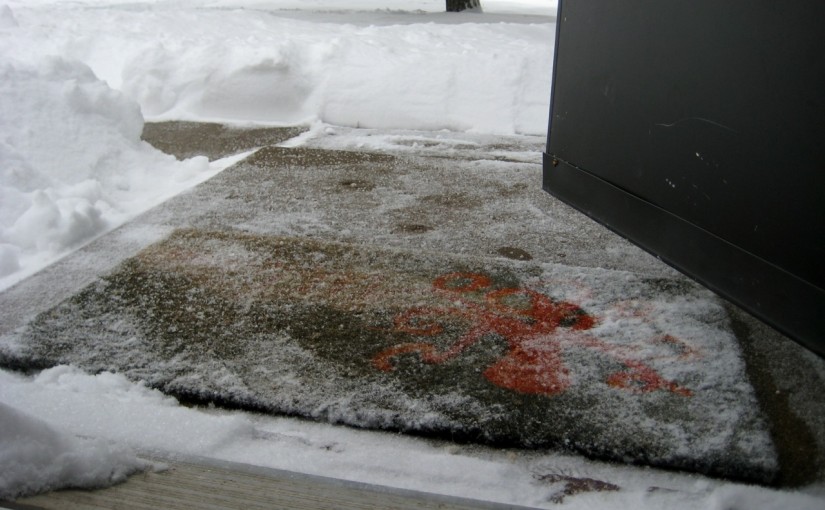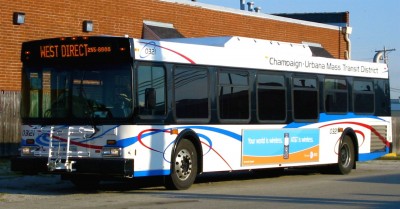I’m not sure who ought to clear the sidewalk on Route 45 near Curtis, but somebody should. I’m fit enough to clamber over three-foot snow walls blocking crosswalks, but hundreds of my neighbors are not. @Applebees @cvspharmacy @SchnuckMarkets



I was on spring break from teaching taiji when the governor’s “stay at home” order was issued, and my friends and I had already started social distancing on our own. So for the past week I’ve just carried on as I’d been doing the week before.
But now my spring break is over. Two weeks ago, I thought I’d be going back to the Savoy Rec Center tomorrow to teach the last six weeks of the final session before we took our summer break.
I’m sure I’m just a week behind everybody else who teaches—feeling bad for my students, uncertain as to what’s going to happen, wondering what long-term changes will be wrought by the whole thing—but those feelings are nonetheless genuine just because they’re a delayed version of what lots of other people have already had to face.
At least I don’t have the financial concerns of people who make a living teaching. (The little I earn teaching taiji is a small fraction of my annual income, plus I’ve already received most of what would have come in before we went on our summer break anyway. Besides which, they may well pay me for the class that had been started—I get a percentage of what my students pay, and they already paid a month ago. Maybe the Savoy Rec Center will refund the money to my students, but otherwise I expect them to pay me as usual. I’d be happy enough with either scenario.)
Anyway, although it’s purely a mental shift for me, my spring break is over.
I’m about to switch from “not teaching taiji because I’m on break” to “not teaching taiji because there’s a pandemic.”

As is typical for these parts, we had our biggest snowfall of the year on March first. I don’t know what the official snowfall total will be, but just eyeballing the snow right here, I’d have to say it was about 10 inches.
If the metric is clearing snow and ice off the sidewalk, Champaign-Urbana may be the least neighborly place in the world—I’ve never seen so many sidewalks left impassible as I see in virtually any neighborhood in Champaign or Urbana, the only exceptions being campus and right downtown. But local ordinance requires apartment complexes to clear their sidewalks, and Country Fair Apartments did so, promptly and thoroughly.
Here in Winfield Village the complex clears the sidewalks as well, including right up to the door for the apartment buildings—but not for townhouses. Townhouse dwellers are supposed to clear their own walk, just from the door to the main sidewalk.
My sidewalk is perhaps ten paces long and a typical width for a private walk—a bit narrower than a public sidewalk. Unless there’s a lot of snow, I can shovel it clear and put down some salt in less than ten minutes.
After 20 years in which I had no sidewalk to shovel, I have to say that so far I am enjoying my tiny bit of shoveling immensely. It makes me feel connected to my neighborhood. It also adds a whole second layer of righteously smug self-satisfaction when I become annoyed at the people who can’t be bothered to clear their sidewalks. And there’s not much I enjoy more than getting a good smug on.
I’ve been practicing taiji for more than 4 years now. Jackie and I started with a 16-week class at OLLI, after which we continued studying with the same teacher, Mike Reed, at the Savoy Recreation center.

The OLLI class taught an 8-movement form, the same form I taught my students when I taught a taiji class for the Champaign Park District this summer. We continued to do that form in the Savoy Rec classes, but also started learning a form that consisted of the first 12 of the Chen 48-movement form. Fairly early on, Mike proceeded to teach us the second 12 movements, so that we had a 24-movement form.
We stuck with that 24-movement form for a long time—I think we went most of a year without adding any new movements.
Jackie and I and a couple of other students bugged Mike about adding more movements, but he resisted. I think I now understand the reasons. The first 24 movements are pretty easy to do. That is, learning the whole sequence takes a while, and doing them exactly right may be difficult, but no individual piece of any of the movements is physically very challenging. Starting early in the second half of the 48, there are a number of movements that are considerably more challenging: Hops, jumps, kicks, and pivots—sometimes in combinations—that Mike hesitated to try to teach to a class where I’m the youngest guy there.
Eventually, after maybe a year, we wore him down. A year and a half ago, we got through the third 12 movements (somewhat modified, to reduce the aggressiveness of some of the jump-kicks and hopping pivots). This fall, we’ve learned the final 12 movements, doing the last two last week.
Today, for the first time, we did the whole 48-movement form from beginning to end.
I still have a lot to learn, even about the first movements—and, of course, I barely know the last few. But that’s okay. One of the first things I learned in taiji—that I should have learned from my previous studies of martial arts, but somehow didn’t—is that taiji isn’t something that you learn: it’s something that you do.
Now I can do a bit more. That’s all. And yet, it’s kind of a big deal to me.

 The town of Savoy, just south of Champaign, makes a point of having lower taxes. They do so by not providing many of the amenities that Champaign and Urbana provide—no bus service, no public library, etc. Residents, since they can be free riders on Champaign and Urbana services, like the situation just fine.
The town of Savoy, just south of Champaign, makes a point of having lower taxes. They do so by not providing many of the amenities that Champaign and Urbana provide—no bus service, no public library, etc. Residents, since they can be free riders on Champaign and Urbana services, like the situation just fine.
A few years back, the Champaign-Urbana Mass Transit District was looking to expand its service area into Savoy. Property owners in Savoy didn’t like that idea.
There are rules allowing taxing districts to annex adjacent areas and begin providing services—and assessing the tax. The rules make it pretty tough for an area to opt out; just about the only way is to already be in the taxing district of another service provider. With that in mind, Savoy created its own mass transit district a few years ago (the Champaign Southwest Mass Transit District). The idea was that it wouldn’t provide any mass transit service and wouldn’t levy any tax.
All very sad, of course, for anyone like me who uses the bus service, along with anyone who thinks that public services are a good idea. Which meant there was a bit of schadenfreude when, as anyone with any sense had foreseen, Savoy’s transit district promptly levied a small tax (to pay the legal cost of fighting CUMTD’s attempt to annex areas within the district anyway). Taxing districts levy taxes. It’s what they do.
Now we’re getting a bit more schadenfreude: People within Savoy’s transit district (the new YMCA and an apartment complex) are asking the district to provide transit services.
It’s funny, but it’s also kind of sad. I mean, the people who built the apartment complex and the YMCA surely knew that they were building in a place where there was no transit service. I’m sure they picked those locations because the land was cheap. Didn’t they stop to think that the reason the land was cheap was because of the lack of services?
On the one hand, I’m glad to see the Savoy transit district getting pressured to provide transit services. Providing transit services are what transit districts are supposed to do. And I have no sympathy for the residents who created the district in the hopes of dodging a tax—only a moron creates a taxing district while expecting not to be taxed.
But I’m still kind of sad. If transit service to the YMCA is important (and the YMCA says the lack of it is their visitor’s number one complaint), wouldn’t it have made more sense to build the new YMCA within the CUMTD service area? Instead, they build where they know there’s no service, and then complain about it: More sprawl and more bickering.
Of course, those are just more reasons why the Champaign Southwest Mass Transit District was a bad idea. I mean, really! Who’s so stupid as to create a taxing district hoping not to be taxed?